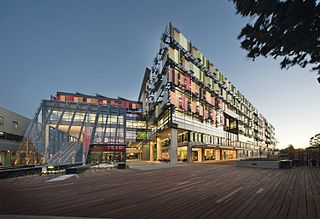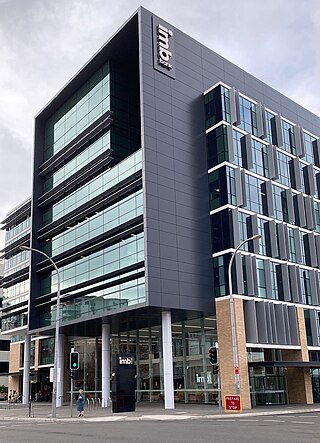
The Gramm–Leach–Bliley Act (GLBA), also known as the Financial Services Modernization Act of 1999, is an act of the 106th United States Congress (1999–2001). It repealed part of the Glass–Steagall Act of 1933, removing barriers in the market among banking companies, securities companies, and insurance companies that prohibited any one institution from acting as any combination of an investment bank, a commercial bank, and an insurance company. With the passage of the Gramm–Leach–Bliley Act, commercial banks, investment banks, securities firms, and insurance companies were allowed to consolidate. Furthermore, it failed to give to the SEC or any other financial regulatory agency the authority to regulate large investment bank holding companies. The legislation was signed into law by President Bill Clinton.

Financial services are economic services provided by the finance industry, which together encompass a broad range of service sector firms that provide financial management, including credit unions, banks, credit-card companies, insurance companies, accountancy companies, consumer-finance companies, stock brokerages, investment funds, individual asset managers, and some government-sponsored enterprises.

Bendigo and Adelaide Bank, is an Australian financial institution, operating primarily in retail banking. The company was formed by the merger of Bendigo Bank and Adelaide Bank in November 2007.
Bankwest is an Australian full-service bank based in Perth, Western Australia. It was sold in October 2008 to the Commonwealth Bank of Australia for A$2.1 billion and operates as a division of its parent company.
A mutual organization, or mutual society is an organization based on the principle of mutuality and governed by private law. Unlike a true cooperative, members usually do not contribute to the capital of the company by direct investment, but derive their right to profits and votes through their customer relationship. A mutual organization or society is often simply referred to as a mutual.
Banking in Australia is dominated by four major banks: Commonwealth Bank, Westpac, Australia & New Zealand Banking Group and National Australia Bank. There are several smaller banks with a presence throughout the country which includes Bendigo and Adelaide Bank, Suncorp Bank, and a large number of other financial institutions, such as credit unions, building societies and mutual banks, which provide limited banking-type services and are described as authorised deposit-taking institutions (ADIs). Many large foreign banks have a presence, but few have a retail banking presence. The central bank is the Reserve Bank of Australia (RBA). The Australian government’s Financial Claims Scheme (FCS) guarantees deposits up to $250,000 per account-holder per ADI in the event of the ADI failing.
A mutual savings bank is a financial institution chartered by a central or regional government, without capital stock, owned by its members who subscribe to a common fund. From this fund, claims, loans, etc., are paid. Profits after deductions are shared among the members. The institution is intended to provide a safe place for individual members to save and to invest those savings in mortgages, loans, stocks, bonds and other securities and to share in any profits or losses that result.
HSBC Bank Australia Limited is the Australian subsidiary of HSBC. The bank offers a wide range of financial services in Australia through a network of 36 branches and offices. These services include retail and commercial banking, financial planning, trade finance, treasury, and financial markets, payments and cash management, and securities custody.
Westamerica Bancorporation is the holding company for Westamerica Bank and its subsidiaries. The commercial and regional community bank, headquartered in San Rafael, California, has $4.7 billion in assets and more than 90 branches in Northern and Central California.
Core banking is a banking service provided by a group of networked bank branches where customers may access their bank account and perform basic transactions from any of the member branch offices.
Micro financing in Tanzania started in 1995 with SACCOS and NGOs. It has since then contributed to the increasing success of international micro financing. Microfinance stills remains a relatively new in Tanzania since it has not penetrated yet. Since 1995, microfinance has been linked to poverty alleviation programs and women. The government made efforts to ensure commercial banks have continued to provide financial support to the small entrepreneurial business. However a microfinance National Policy was implemented in 2002 to encourage and support microfinances in the country. Since the implementation, micro financing was officially launched and recognized as a poverty alleviation tool. Due to its increase exposure and use in the nation, commercial banks have developed interests in to offer microfinance. There are various microfinance banks that functions as supporting institutions in the country that usually provide microfinance services. These may include the CRDB, National Microfinance Bank, and AKIBA. However there are also other few banks that are concerned with micro financing in Tanzania such as the PRIDE and SEDA, Tanzania Postal Bank and FINCA. Community and small banks have also expressed interest in the same including the NGOs and other non-profit organizations.
Financial inclusion is defined as the availability and equality of opportunities to access financial services. It refers to a process by which individuals and businesses can access appropriate, affordable, and timely financial products and services. These include banking, loan, equity, and insurance products. Financial inclusion efforts typically target those who are unbanked and underbanked, and directs sustainable financial services to them. Financial inclusion is understood to go beyond merely opening a bank account. It is possible for banked individuals to be excluded from financial services. Having more inclusive financial systems has been linked to stronger and more sustainable economic growth and development and thus achieving financial inclusion has become a priority for many countries across the globe.

Westpac Banking Corporation, known simply as Westpac, is an Australian multinational banking and financial services company headquartered at Westpac Place in Sydney, New South Wales.

A bank is a financial institution that accepts deposits from the public and creates a demand deposit while simultaneously making loans. Lending activities can be directly performed by the bank or indirectly through capital markets.

ME Bank, also known as ME, is an Australian direct bank based in Melbourne. ME Bank no longer has branches in Sydney, Brisbane, Adelaide, Perth, Hobart, Canberra and Darwin. It became a subsidiary of Bank of Queensland in July 2021.

IMB Bank is an Australian mutual bank established in 1880. In 2020, IMB Bank was voted by Forbes as one of the World's Best Banks, and, in 2022, was found by financial services research company Canstar to have Australia's Most Satisfied Customers for both the Bank and Mutual Bank categories.
Police Bank Ltd. is an Australian, member-owned mutual bank. Founded as NSW Police Credit Union (PCU) on 24 October 1964 by a group of officers from the Clarence Street Police Station in Sydney, its members passed a resolution to enable "Police Credit Union" to become "Police Bank Ltd." on 3 December 2012.
Greater Bank is an Australian customer-owned bank and now a brand of Newcastle Greater Mutual Group, an organisation formed through the merger between Greater Bank and Newcastle Permanent Building Society.
Bandhan Bank Ltd. is a banking and financial services company, headquartered in Kolkata. Bandhan Bank is present in 35 out of 36 states and union territories of India, with 6,140 banking outlets and 3.07 crore customers. Having received the universal banking licence from the Reserve Bank of India, Bandhan Bank started operations on August 23, 2015, with 501 branches, 50 ATMs and 2,022 Banking Units (BUs). The Bank has mobilised deposits of ₹1,08,479 crore and its total advances stand at ₹1,03,168 crore as of June 30, 2023.

Suncorp Bank is a part of the Suncorp Group, with head offices in Brisbane, Australia. From its beginnings in 1902 as the Queensland Agricultural Bank, Suncorp Bank has grown into the sixth largest bank in Australia.







